The Australian Energy Market Operator’s (AEMO’s) latest Quarterly Energy Dynamics report shows renewables made up 43% of the supply mix in the National Electricity Market (NEM) in the first quarter of 2025, a 4% increase on the same period last year and a new high for a March quarter.
The contribution of renewables to the NEM supply mix for the first three months of the year reached a peak on 27 January, climbing to 72.4% of total generation, just 3.2% below the current record for peak renewable contribution which occurred in the final quarter of 2024.
AEMO Executive General Manager Policy and Corporate Affairs Violette Mouchaileh said steady growth in grid-scale solar and wind capacity and a growing fleet of big batteries is driving the increased renewable market share.
During the first quarter, 500 MW of plant across five projects progressed through commissioning to reach full output. These include the 150 MW Gangarri and 40 MW Kingaroy solar farms in Queensland, the 200 MW Blyth battery energy storage system in South Australia, and the 46 MW Mokoan Solar Farm and 56 MW Crookwell 3 Wind Farm in Victoria.
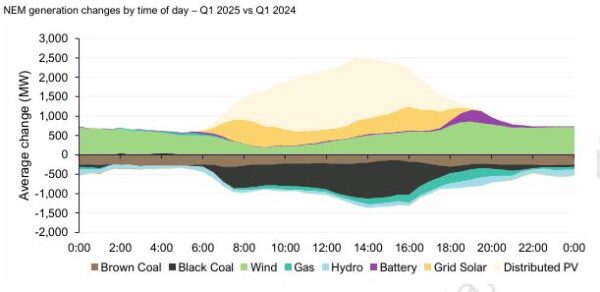
Image: AEMO
The introduction of the new solar farms saw grid-scale solar generation reach a new all-time high during the first quarter, increasing 10% year-on-year to average 2,386 MW for the three months to March.
Rooftop solar average output grew 16%, achieving a record first quarter high of 3,782 MW thanks to increases “in both solar irradiance and the installed capacity of distributed PV.”
Battery generation output also reached a new high in the first quarter, increasing 86% to 98 MW when averaged across all hours but concentrated strongly in the evening peak period.
Wind generation rose 18% to average 3,517 MW this quarter. Conversely, output from black and brown coal decreased by 3.2% to 10,269 MW, and 6.7% to 3,429 MW respectively. Gas generation decreased 8.3% to average 941 MW.
Underlying demand reached a new Q1 record of 25,162 MW in the first three months of 2025, however minimum operational demand records also occurred during the period, with all-time new lows in Victoria (1,504 MW) and NSW (2,718 MW).
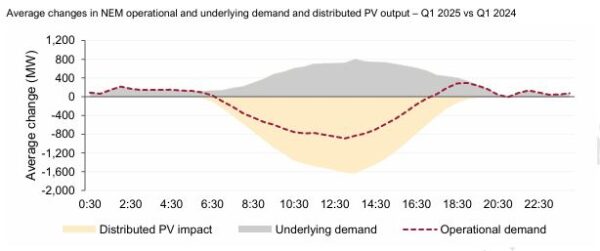
demand
Image: AEMO
“These minimum demand records were largely attributable to growth in rooftop solar,” Mouchaileh said.
“The impact of the transitioning electricity system was also seen, with a 5.1% decline in total emissions, due to the combination of lower coal and gas-fired generation and higher renewable output.”
Mouchaileh said Western Australia’s Wholesale Electricity Market (WEM) experienced similar trends to the NEM with record renewable and battery contributions.
Renewable averaged 41.6% of the WEM supply mix in the first quarter of 2025, a 2.5% increase on the same period last year and a new high for a March quarter.
Underpinning the renewable contributions was a 261% increase (25.6 MW) in battery generation to comprise 1.3% of the supply mix.
Rooftop solar generation continued to grow, with its share of the mix expanding to 20.5%, up from 19.3% during the same period last year.
Alongside this, output from coal-fired generators fell 4.6%.
“The higher renewable and battery generation combined with lower coal-fired power output resulted in a Q1 record low in emissions intensity, which was 5.7% below the same period last year,” Mouchaileh said. “This reflects the impacts of the transition underway within Western Australia’s main power grid.”
This content is protected by copyright and may not be reused. If you want to cooperate with us and would like to reuse some of our content, please contact: editors@pv-magazine.com.
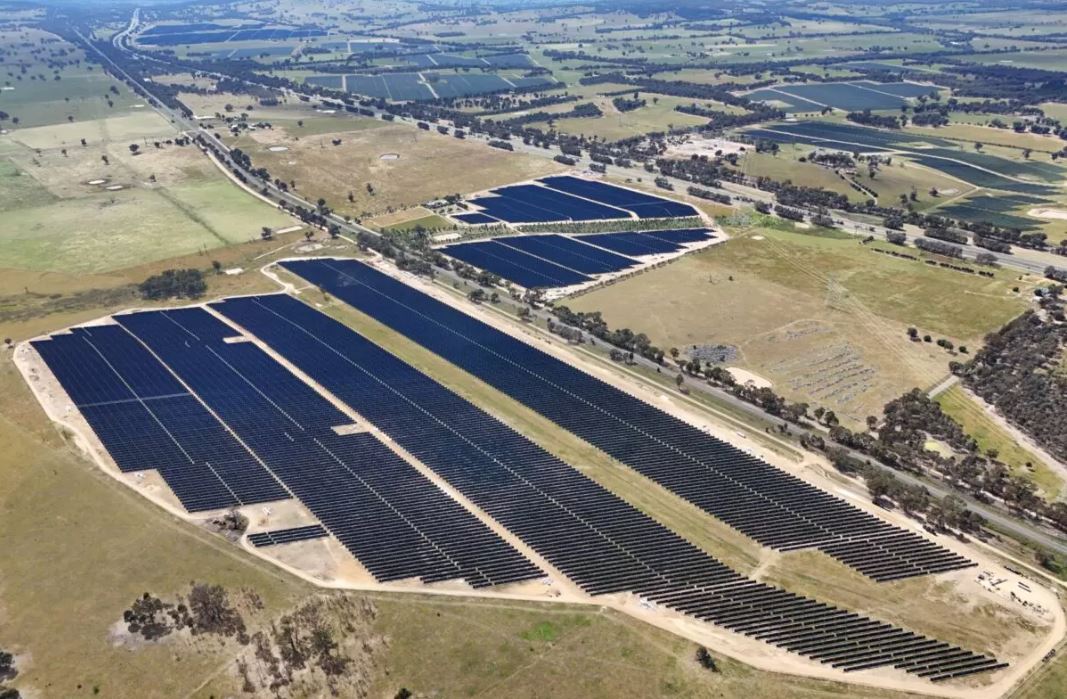
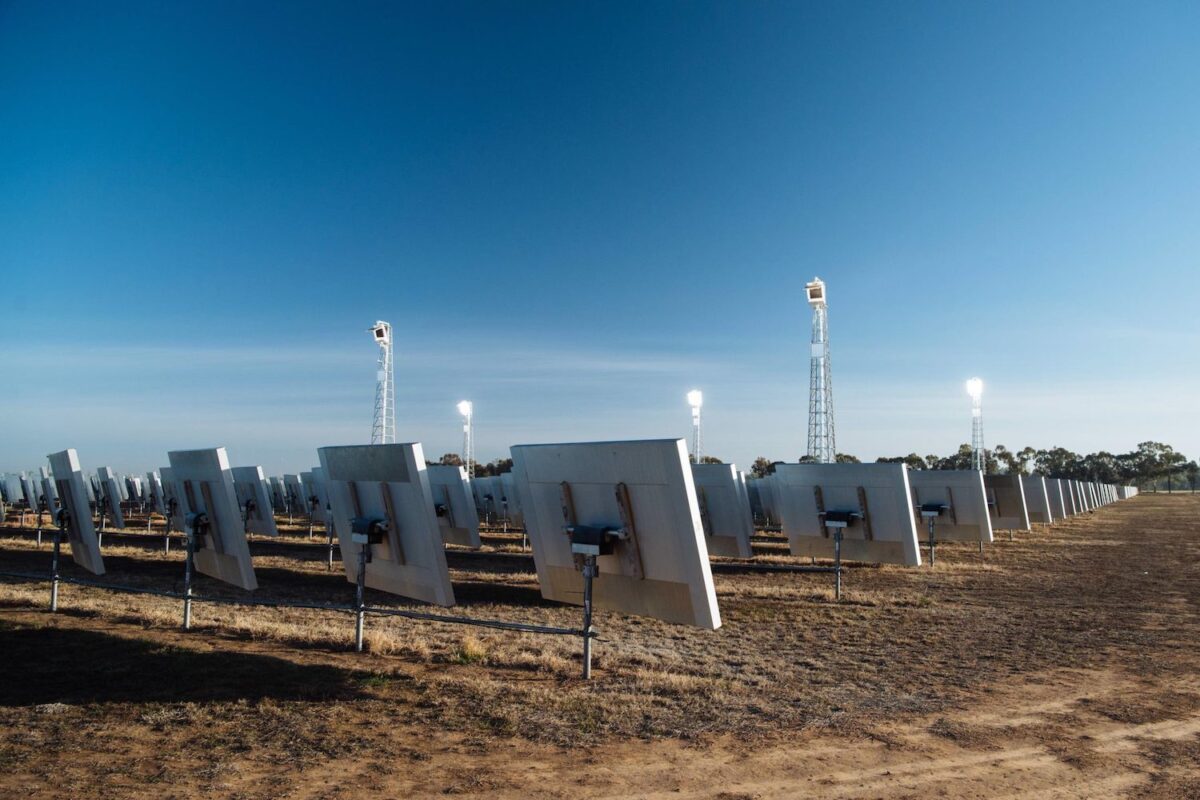
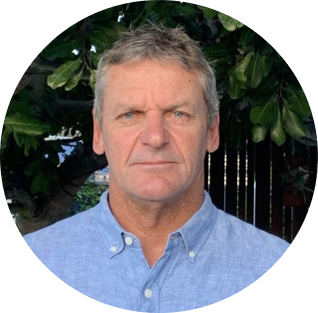

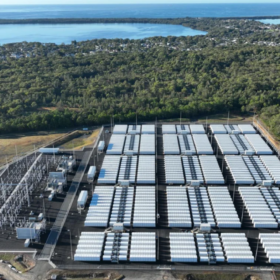
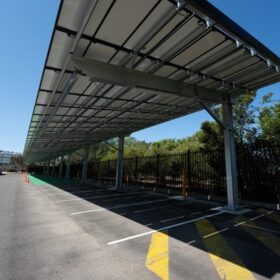
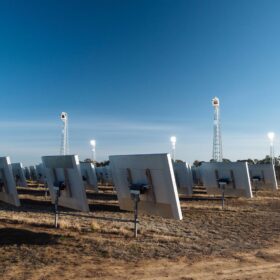
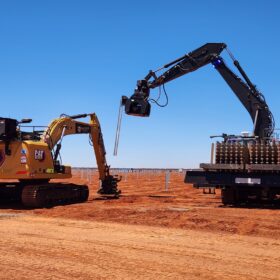
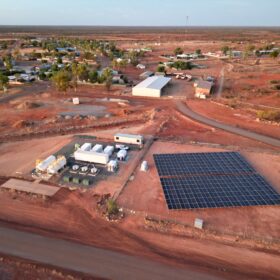
By submitting this form you agree to pv magazine using your data for the purposes of publishing your comment.
Your personal data will only be disclosed or otherwise transmitted to third parties for the purposes of spam filtering or if this is necessary for technical maintenance of the website. Any other transfer to third parties will not take place unless this is justified on the basis of applicable data protection regulations or if pv magazine is legally obliged to do so.
You may revoke this consent at any time with effect for the future, in which case your personal data will be deleted immediately. Otherwise, your data will be deleted if pv magazine has processed your request or the purpose of data storage is fulfilled.
Further information on data privacy can be found in our Data Protection Policy.